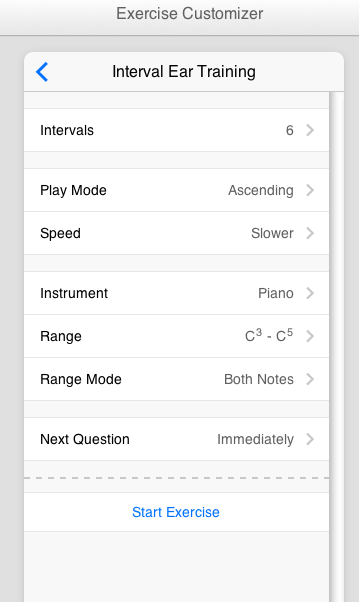Practice Your Ability to Recognize Intervallic Relationships by Ear.
I’ve written numerous blogs on the importance of practicing your ear.
The huge advantages that come with having a trained ear, are often underestimated.
Everything becomes easier when you have a good ear:
- You learn new songs much more quickly and easily.
- Memorizing songs becomes a breeze.
- Learning and memorizing guitar solos takes much less time and effort.
- Band rehearsals become much more productive. You’re not wasting time in miscommunications when your ear tells you what the other musicians are doing.
- You’re much more confident during live shows. Your ear guides your fingers to the right locations.
- You get more gigs and more income because it takes you very little time to learn tons of songs.
- Learning new chords or scales becomes much easier
- Music theory makes much more sense much more quickly. You’re not only merely learning and memorizing theory: you’re hearing the relationships between the things you’re learning about while reading.
- Sight reading improves a lot. When you always look 1 measure ahead while reading music, you’re “pre-hearing” the melody before playing it. As a result: your ear guides your fingers to the notes you’re seeing on paper.
- Your guitar solos become tremendously better. You can hear and play things you could never play before.
- You learn tons merely from listening to a song. When your ear is trained to the point where you can analyze what is going on in a song just by ear, you learn from every song you listen to.
- … and so much more.
Unfortunately: ear training is typically never anybody’s favorite practice.
I believe though that a lot of this has to do with how teachers present it to students.
Do Following Ear Training Exercise a Couple of Times A Day.
All my students find the following drill quite enjoyable.
It’s easy to get it started, it continuously shows you your accuracy rate as a percentage (which makes the drill feel like a game where you constantly try to improve your score) and you only have to do the drill for a short time, to see great results.
Do 3 sessions of 4 minutes a day using following webpage: Interval Ear Training
Yes, you will experience fantastic progress, only practicing this for 12 minutes a day.
The only requirement is that you do it EVERY day without skipping days.
On that webpage: click on “interval ear training” (3rd from the bottom)
This will open up a page that looks like the following:

- click on “intervals”
- select the first 3 intervals to get started with (unison, minor 2nd, and major 2nd). If you already have a good ear, add more intervals to start with.
- Then, click on the arrow to go back to the previous page.
- Leave the other default settings as is (ascending, slowest, etc…)
- click on “start exercise”
- If you have an 85% accuracy for 3 minutes, non-stop, for the intervals you are practicing, add the next interval on the list. (keep adding)
- Keep going till you covered all 12 intervals ascending.
- When you covered all 12 intervals and feel pretty comfortable with them, change the speed setting to the next faster speed. The piano player will play the notes with lesser space in between them now. Keep working up the speed till you are comfortable hearing the ascending intervals at the fastest speed setting.
- When you worked it up to the highest speed setting: start practicing descending intervals. Start over again with only a couple of intervals, descending only, slowest speed setting, and do all of the above again but descending.
- When you finished all 12 intervals descending as explained above, start over again, but now practicing all intervals harmonically, building it up again, gradually adding 1 interval at a time as you have an 85% accuracy for the ones you are working on)
- Lastly: Practice all the above combined (All intervals, all combinations ascending, descending & harmonically, fastest speed)
Conclusion.
Again: only practice in 4-minute sessions at a time.
Short drills are more motivating than long sessions.
It is also easier to keep your concentration up to peak performance if you know you only have to focus on something for a short time. This approach ensures more productive practice.
Depending on where your hearing abilities are at, getting good at this drill might take anywhere from a couple of weeks to a couple of months.
You want to get so good at it, that you don’t have to think about it anymore.
If within a fraction of a second after hearing the interval, you can click on the right answer, and do so consistently for all intervals and combinations (ascending, descending, harmonically), you are ready for the ear training drills I will talk about in the next week’s blog.
Hit me up anytime at vreny@zotzinmusic.com if you have any questions, or if you would like to book a lesson.
These free lessons are cool, but you will never experience the progress, joy, and results that my students experience in lessons when you’re learning by yourself from blogs and videos.
That is why people take lessons: way better results and progress, much more complete information, exposed to way more creative ideas than you can get from a blog or YouTube video.
There is only so much that self-study can accomplish.
If you want to see amazing results and progress in your guitar playing, buy your first lesson here and get started ASAP.
You’ll impress your friends and loved ones in no time with your guitar playing!
Consider donating any small amount to help me keep this blog going.
Thank you for your support!


